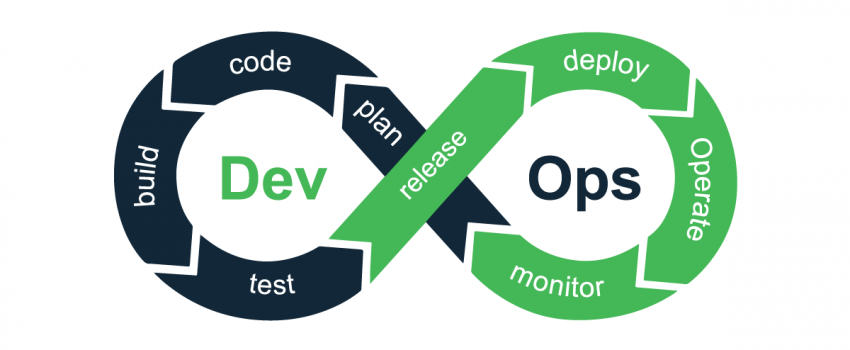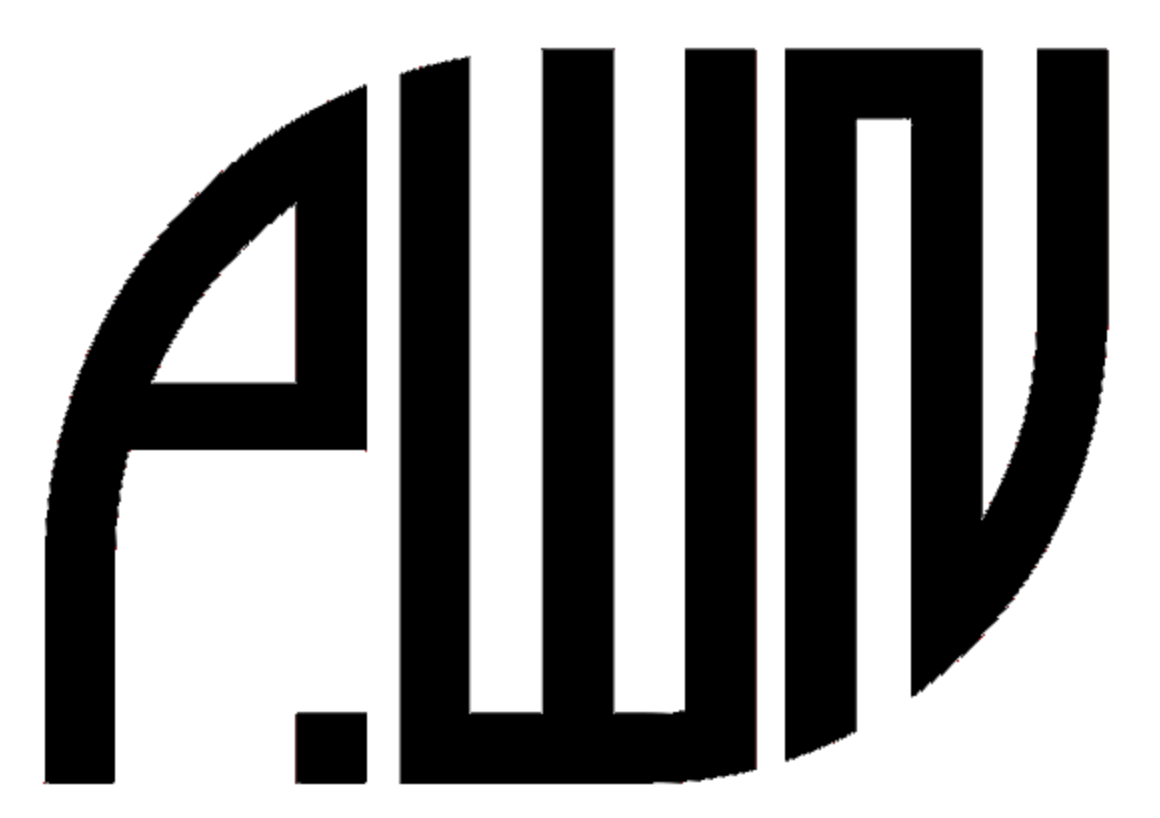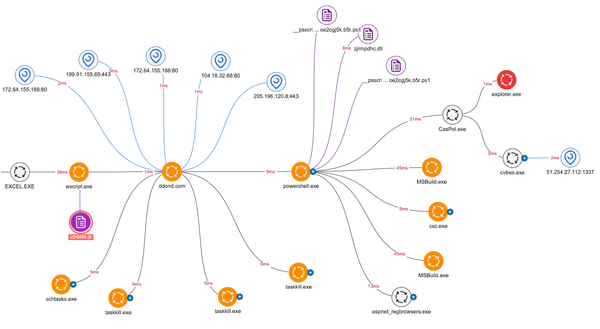Secure DevOps Pipeline Implementation: Practical Scanning and Testing Integration

In today's accelerated software development landscape, organizations face the challenge of delivering applications faster while ensuring they remain secure. Traditional security approaches that treat assessment as a final gate before production are no longer viable in modern DevOps environments. Instead, security must be seamlessly integrated throughout the development pipeline—a practice known as DevSecOps. This article provides a comprehensive, technical guide to implementing security scanning and testing in DevOps pipelines, with practical configurations, integration patterns, and real-world implementation strategies.
Understanding the Security Challenges in DevOps
The core principles of DevOps—continuous integration, automated testing, and rapid deployment—create unique security challenges that traditional approaches cannot address:
- Velocity vs. Security: Accelerated development cycles can bypass security controls
- Infrastructure as Code: Configuration errors can create systemic vulnerabilities
- Containerization: New attack surfaces through container ecosystems
- Microservices Architecture: Expanded attack surface through service-to-service communications
- Cloud-Native Development: Distributed responsibility models for security
These challenges require a fundamentally different approach to security—one that is automated, integrated, and aligned with DevOps practices. The key to success lies in implementing security controls that enhance rather than hinder the development process.
The Secure DevOps Pipeline Architecture
A comprehensive secure DevOps pipeline integrates security at multiple stages, following the principle of "shifting left" while maintaining controls throughout the entire software delivery lifecycle.
Planning Phase Security Integration
Security begins before a single line of code is written:
- Threat Modeling Automation: Implement tools like OWASP Threat Dragon or Microsoft Threat Modeling Tool
- Security Requirements Definition: Create predefined security stories in issue tracking systems
- Secure Design Reviews: Establish automated checklists for architecture reviews
Integrating security at the planning phase ensures that applications are designed with security in mind from inception, reducing costly remediation efforts later.
Development Environment Security
Developers need security tools integrated into their daily workflow:
- Pre-commit Hooks: Implement Git hooks that perform initial security checks before code is committed
- IDE Security Plugins: Deploy plugins for Visual Studio Code, IntelliJ, and other IDEs that provide real-time security feedback
- Secrets Management: Integrate with vault solutions like HashiCorp Vault or AWS Secrets Manager
# Example pre-commit hook configuration (pre-commit-config.yaml)
repos:
- repo: https://github.com/gitleaks/gitleaks
rev: v8.16.1
hooks:
- id: gitleaks
- repo: https://github.com/zricethezav/detect-secrets
rev: v1.4.0
hooks:
- id: detect-secrets
- repo: https://github.com/sobolevn/git-secret
rev: v0.5.0
hooks:
- id: git-secret-check
These tools catch security issues before they enter the codebase, reducing friction and providing immediate feedback to developers.
CI/CD Pipeline Security Implementation
The continuous integration and continuous deployment (CI/CD) pipeline forms the backbone of DevOps practices and represents a critical focus area for security integration.
Source Code Repository Security
Modern pipelines start with secure code repositories:
- Branch Protection: Implement strict branch protection rules
- Required Reviews: Configure mandatory peer reviews before merging
- Signed Commits: Enforce commit signing for code authenticity
- Access Control: Implement granular permissions following least privilege
These controls ensure the integrity of the codebase while enabling collaborative development. Advanced penetration testing techniques often identify weaknesses in these configurations, making them a priority for hardening.
Continuous Integration Security Tools
The CI stage provides the first opportunity for automated security testing:
Static Application Security Testing (SAST)
SAST tools analyze source code to identify security vulnerabilities without executing the application:
# Example GitHub Actions workflow with SAST integration
name: Security Scan
on:
push:
branches: [ main, develop ]
pull_request:
branches: [ main ]
jobs:
security-scan:
runs-on: ubuntu-latest
steps:
- uses: actions/checkout@v3
with:
fetch-depth: 0
- name: SonarQube Scan
uses: SonarSource/sonarcloud-github-action@master
env:
GITHUB_TOKEN: ${{ secrets.GITHUB_TOKEN }}
SONAR_TOKEN: ${{ secrets.SONAR_TOKEN }}
- name: Semgrep Scan
uses: returntocorp/semgrep-action@v1
with:
config: p/owasp-top-ten
Effective SAST implementation requires:
- Custom Rule Development: Tailoring rules to your specific frameworks and patterns
- Baseline Configuration: Establishing acceptable thresholds for findings
- False Positive Management: Implementing processes for triaging and suppressing false positives
- Progressive Scanning: Starting with critical vulnerabilities and expanding coverage over time
Software Composition Analysis (SCA)
SCA tools identify vulnerabilities in third-party dependencies and open source components:
# Example Jenkins pipeline with SCA integration
pipeline {
agent any
stages {
stage('Dependency Check') {
steps {
sh 'dependency-check.sh --scan . --format XML --out dependency-reports'
dependencyCheckPublisher pattern: 'dependency-reports/dependency-check-report.xml'
}
}
stage('OWASP Dependency Track') {
steps {
withCredentials([string(credentialsId: 'dependency-track-api-key', variable: 'API_KEY')]) {
sh '''
curl -X "POST" "https://dependency-track.example.com/api/v1/bom" \
-H "Content-Type: multipart/form-data" \
-H "X-API-Key: ${API_KEY}" \
-F "project=${PROJECT_UUID}" \
-F "[email protected]"
'''
}
}
}
}
}
Best practices for SCA implementation include:
- Dependency Lockfiles: Ensuring reproducible builds with exact versions
- Policy Configuration: Defining acceptable risk levels for vulnerabilities
- Automated Update Workflows: Creating processes for secure dependency updates
- License Compliance: Enforcing approved open-source licenses
Container Security Scanning
For containerized applications, specialized scanning tools are essential:
# Example Azure DevOps pipeline with container scanning
trigger:
- main
pool:
vmImage: 'ubuntu-latest'
steps:
- task: Docker@2
inputs:
command: 'build'
Dockerfile: 'Dockerfile'
tags: 'latest'
- task: AquaSecurityScan@5
inputs:
image: 'myapp:latest'
scanType: 'containerImage'
outputFormat: 'html'
failOnAlert: true
- task: PublishBuildArtifacts@1
inputs:
pathToPublish: '$(Build.ArtifactStagingDirectory)/aqua-scan-results.html'
artifactName: 'security-reports'
Container security implementation should address:
- Base Image Verification: Using minimal, trusted base images
- Layer Analysis: Scanning individual layers for vulnerabilities
- Configuration Validation: Checking for insecure container settings
- Runtime Protection: Implementing admission controllers and policies
Dynamic Testing in the Pipeline
While static analysis provides valuable insights, dynamic testing is essential for identifying runtime vulnerabilities:
Dynamic Application Security Testing (DAST)
DAST tools test running applications by simulating attacks:
# Example GitLab CI configuration with DAST
stages:
- build
- test
- dast
dast:
stage: dast
image: owasp/zap2docker-stable
script:
- mkdir -p /zap/wrk
- /zap/zap-baseline.py -t https://staging.example.com -g gen.conf -r zap-report.html
artifacts:
paths:
- zap-report.html
expire_in: 1 week
only:
- main
Effective DAST implementation requires:
- Authentication Configuration: Providing valid credentials for authenticated scanning
- Scope Definition: Specifying which endpoints to include/exclude
- Progressive Scanning: Starting with passive analysis before enabling active attacks
- Performance Considerations: Scheduling resource-intensive scans appropriately
Interactive Application Security Testing (IAST)
IAST tools operate from within the application to identify vulnerabilities during testing:
# Example CircleCI configuration with IAST integration
version: 2.1
jobs:
build_and_test:
docker:
- image: cimg/openjdk:17.0
steps:
- checkout
- run:
name: Download Contrast Security Agent
command: |
curl -L https://repository.sonatype.org/service/local/artifact/maven/redirect?r=central-proxy&g=com.contrastsecurity&a=contrast-agent&v=LATEST -o contrast.jar
- run:
name: Run Tests with Contrast Security
command: |
java -javaagent:contrast.jar \
-Dcontrast.server.name=CircleCI \
-Dcontrast.agent.java.standalone_app_name=MyApp \
-Dcontrast.api.url=https://app.contrastsecurity.com/Contrast \
-Dcontrast.api.api_key=$CONTRAST_API_KEY \
-Dcontrast.api.service_key=$CONTRAST_SERVICE_KEY \
-Dcontrast.api.user_name=$CONTRAST_USER \
-jar target/myapp.jar
IAST provides deeper visibility into application vulnerabilities but requires:
- Agent Configuration: Deploying and configuring instrumentation agents
- Performance Tuning: Balancing coverage with acceptable overhead
- Test Coverage: Ensuring comprehensive test scenarios trigger various code paths
Infrastructure as Code (IaC) Security
Modern applications rely heavily on infrastructure defined as code, requiring specialized security tooling:
# Example Terraform scanning in AWS CodeBuild
version: 0.2
phases:
install:
runtime-versions:
python: 3.9
commands:
- pip install checkov
pre_build:
commands:
- echo Scanning Terraform code...
build:
commands:
- checkov -d . --framework terraform --output cli --output junitxml --output-file-path console,results.xml
reports:
checkov-reports:
files:
- results.xml
file-format: JUNITXML
IaC security scanning should address:
- Secure Configuration Validation: Checking for insecure defaults
- Compliance Verification: Ensuring infrastructure meets regulatory requirements
- Drift Detection: Identifying unauthorized changes to infrastructure
- Secret Detection: Preventing credentials from being embedded in code
Many organizations are now implementing AWS security architecture with built-in compliance and security guardrails to enforce these standards automatically.
Runtime Security Monitoring Integration
Security doesn't end with deployment; runtime monitoring is essential for detecting and responding to active threats:
Runtime Application Self-Protection (RASP)
RASP tools integrate directly with applications to detect and block attacks in real-time:
# Example Kubernetes deployment with RASP integration
apiVersion: apps/v1
kind: Deployment
metadata:
name: my-secure-app
spec:
replicas: 3
template:
spec:
containers:
- name: app
image: myregistry/myapp:latest
env:
- name: JAVA_TOOL_OPTIONS
value: "-javaagent:/opt/security/rasp-agent.jar"
volumeMounts:
- name: rasp-agent
mountPath: /opt/security
volumes:
- name: rasp-agent
configMap:
name: rasp-agent-config
RASP implementation requires careful consideration of:
- Performance Impact: Balancing security coverage with acceptable overhead
- False Positive Management: Tuning to reduce inappropriate blocking
- Attack Coverage: Ensuring protection against relevant attack vectors
- Incident Response Integration: Connecting alerts to security operations
Container Runtime Security
For containerized applications, specialized runtime security tools are essential:
# Example Falco runtime security configuration
apiVersion: apps/v1
kind: DaemonSet
metadata:
name: falco
namespace: security
spec:
selector:
matchLabels:
app: falco
template:
metadata:
labels:
app: falco
spec:
containers:
- name: falco
image: falcosecurity/falco:latest
securityContext:
privileged: true
volumeMounts:
- name: dev-fs
mountPath: /host/dev
- name: proc-fs
mountPath: /host/proc
- name: boot-fs
mountPath: /host/boot
- name: lib-modules
mountPath: /host/lib/modules
- name: usr-fs
mountPath: /host/usr
- name: etc-fs
mountPath: /host/etc
volumes:
- name: dev-fs
hostPath:
path: /dev
- name: proc-fs
hostPath:
path: /proc
- name: boot-fs
hostPath:
path: /boot
- name: lib-modules
hostPath:
path: /lib/modules
- name: usr-fs
hostPath:
path: /usr
- name: etc-fs
hostPath:
path: /etc
Effective container runtime security requires:
- Behavioral Baselining: Establishing normal container behavior
- Anomaly Detection: Identifying deviations from expected patterns
- Privilege Management: Enforcing least-privilege execution
- Network Segmentation: Implementing strict container-to-container controls
Implementing a Security Feedback Loop
The true power of DevSecOps comes from creating effective feedback loops that continuously improve security:
Vulnerability Management Integration
Connect scanning tools to vulnerability management systems for tracking and remediation:
# Example Defect Dojo integration script
#!/bin/bash
# Variables
DEFECT_DOJO_URL="https://defectdojo.example.com"
API_KEY="your-api-key"
ENGAGEMENT_ID="123"
SCAN_TYPE="OWASP ZAP Scan"
FILE="zap-report.xml"
# Upload results to Defect Dojo
curl -X POST "$DEFECT_DOJO_URL/api/v2/import-scan/" \
-H "Authorization: Token $API_KEY" \
-H "Content-Type: multipart/form-data" \
-F "engagement=$ENGAGEMENT_ID" \
-F "scan_type=$SCAN_TYPE" \
-F "file=@$FILE" \
-F "close_old_findings=true" \
-F "push_to_jira=true"
A comprehensive vulnerability management approach should include:
- Risk-Based Prioritization: Focusing remediation efforts on the most critical issues
- SLA Enforcement: Establishing time-to-fix requirements based on severity
- Trend Analysis: Tracking security debt over time
- Developer Attribution: Assigning vulnerabilities to responsible teams
Security Testing in Production
Implement controlled security testing in production environments to identify real-world vulnerabilities:
# Example chaos engineering security test with Gremlin
apiVersion: batch/v1
kind: CronJob
metadata:
name: security-chaos-test
spec:
schedule: "0 0 * * 0" # Weekly on Sunday at midnight
jobTemplate:
spec:
template:
spec:
containers:
- name: gremlin
image: gremlin/gremlin:latest
env:
- name: GREMLIN_TEAM_ID
valueFrom:
secretKeyRef:
name: gremlin-credentials
key: team-id
- name: GREMLIN_TEAM_SECRET
valueFrom:
secretKeyRef:
name: gremlin-credentials
key: team-secret
command: ["/bin/sh", "-c"]
args:
- |
gremlin attack network packet-loss --length 60 --target-tags role=web-server --percent 100 &
sleep 30
gremlin attack resource cpu --length 60 --target-tags role=api-server --percent 100
restartPolicy: Never
Production security testing should be approached with caution:
- Controlled Impact: Ensuring tests don't affect user experience
- Graduated Deployment: Starting with non-critical systems
- Recovery Planning: Implementing automated rollback mechanisms
- Monitoring Integration: Observing system responses to security events
Organizations with mature blue team strategies often incorporate production security testing as part of their continuous validation approach.
Metrics and Measurement
Effective DevSecOps implementation requires meaningful metrics to track progress and identify areas for improvement:
Pipeline Security Metrics
Key metrics to track include:
- Mean Time to Remediate (MTTR): Average time to fix identified vulnerabilities
- Security Debt: Total number of unresolved findings over time
- Scan Coverage: Percentage of code and dependencies analyzed
- Vulnerability Escape Rate: Issues that reach production despite controls
- False Positive Rate: Percentage of findings that are not actual vulnerabilities
Security Dashboards
Implement dashboards that provide visibility into security posture:
# Example Grafana dashboard configuration for security metrics
apiVersion: integreatly.org/v1alpha1
kind: GrafanaDashboard
metadata:
name: security-metrics
namespace: monitoring
spec:
name: security-metrics.json
json: |
{
"annotations": {
"list": [
{
"builtIn": 1,
"datasource": "-- Grafana --",
"enable": true,
"hide": true,
"iconColor": "rgba(0, 211, 255, 1)",
"name": "Annotations & Alerts",
"type": "dashboard"
}
]
},
"editable": true,
"gnetId": null,
"graphTooltip": 0,
"id": 1,
"links": [],
"panels": [
{
"aliasColors": {},
"bars": false,
"dashLength": 10,
"dashes": false,
"datasource": "Prometheus",
"fieldConfig": {
"defaults": {},
"overrides": []
},
"fill": 1,
"fillGradient": 0,
"gridPos": {
"h": 9,
"w": 12,
"x": 0,
"y": 0
},
"hiddenSeries": false,
"id": 2,
"legend": {
"avg": false,
"current": false,
"max": false,
"min": false,
"show": true,
"total": false,
"values": false
},
"lines": true,
"linewidth": 1,
"nullPointMode": "null",
"options": {
"alertThreshold": true
},
"percentage": false,
"pluginVersion": "7.5.3",
"pointradius": 2,
"points": false,
"renderer": "flot",
"seriesOverrides": [],
"spaceLength": 10,
"stack": false,
"steppedLine": false,
"targets": [
{
"expr": "sum(security_vulnerabilities) by (severity)",
"interval": "",
"legendFormat": "",
"refId": "A"
}
],
"thresholds": [],
"timeFrom": null,
"timeRegions": [],
"timeShift": null,
"title": "Vulnerabilities by Severity",
"tooltip": {
"shared": true,
"sort": 0,
"value_type": "individual"
},
"type": "graph",
"xaxis": {
"buckets": null,
"mode": "time",
"name": null,
"show": true,
"values": []
},
"yaxes": [
{
"format": "short",
"label": null,
"logBase": 1,
"max": null,
"min": null,
"show": true
},
{
"format": "short",
"label": null,
"logBase": 1,
"max": null,
"min": null,
"show": true
}
],
"yaxis": {
"align": false,
"alignLevel": null
}
}
],
"refresh": "5m",
"schemaVersion": 27,
"style": "dark",
"tags": [],
"templating": {
"list": []
},
"time": {
"from": "now-7d",
"to": "now"
},
"timepicker": {},
"timezone": "",
"title": "Security Metrics",
"uid": "security-metrics",
"version": 1
}
Effective security dashboards provide:
- Executive Visibility: High-level security posture for leadership
- Team-Specific Views: Customized dashboards for development teams
- Trend Analysis: Visualization of security improvements over time
- Comparative Metrics: Benchmarking against industry standards or other teams
Scaling DevSecOps Implementation
As organizations mature their DevSecOps practices, scaling becomes a significant challenge:
Security Champions Program
Establish a security champions program to scale security expertise across teams:
- Selection Process: Identify developers with security interest and aptitude
- Training Curriculum: Develop specialized training for champions
- Incentive Structure: Create recognition and rewards for participation
- Responsibility Definition: Clearly outline security champion duties
Champions serve as force multipliers, providing security guidance within their teams and reducing the bottleneck of centralized security resources.
Security as Code
Implement security policies and controls as code to ensure consistent application:
# Example Open Policy Agent (OPA) constraint template for Kubernetes
apiVersion: templates.gatekeeper.sh/v1beta1
kind: ConstraintTemplate
metadata:
name: k8srequiredlabels
spec:
crd:
spec:
names:
kind: K8sRequiredLabels
validation:
openAPIV3Schema:
properties:
labels:
type: array
items: string
targets:
- target: admission.k8s.gatekeeper.sh
rego: |
package k8srequiredlabels
violation[{"msg": msg, "details": {"missing_labels": missing}}] {
provided := {label | input.review.object.metadata.labels[label]}
required := {label | label := input.parameters.labels[_]}
missing := required - provided
count(missing) > 0
msg := sprintf("you must provide labels: %v", [missing])
}
Security as code provides several advantages:
- Consistency: Ensuring uniform application of security controls
- Auditability: Tracking changes to security policies over time
- Integration: Fitting naturally into existing DevOps workflows
- Automation: Enabling automated verification and enforcement
Cross-Team Collaboration Models
Effective DevSecOps requires new collaboration models between development, operations, and security teams:
- Shared Responsibility Matrix: Clearly defining security responsibilities across teams
- Joint Backlogs: Creating unified work queues for security-related tasks
- Cross-Functional Teams: Embedding security expertise in development teams
- Collaborative Tooling: Implementing shared platforms for security work
The DevSecOps integration model should evolve as organizations mature, with increasing levels of automation and embedded security expertise.
Case Study: Enterprise-Scale DevSecOps Implementation
Consider a large financial services organization that implemented a comprehensive DevSecOps pipeline for their retail banking platform. Their approach included:
- Developer Security Tools:
- IDE plugins for real-time security feedback
- Pre-commit hooks for secrets detection
- Custom security lint rules for their frameworks
- CI/CD Security Integration:
- SAST scanning with Checkmarx
- SCA with Snyk
- Container scanning with Prisma Cloud
- Infrastructure scanning with Terraform Sentinel
- Deployment Controls:
- Image signing and verification
- Runtime vulnerability blocking
- Policy enforcement with OPA Gatekeeper
- Production Security:
- RASP with Contrast Security
- Runtime container monitoring with Falco
- API security with Noname Security
By implementing this comprehensive approach, they reduced security vulnerabilities in production by 87% and decreased mean time to remediate critical issues from 45 days to 7 days, while maintaining their deployment velocity of 200+ releases per month.
Overcoming Common Challenges
Despite the benefits, organizations face several challenges when implementing secure DevOps pipelines:
Performance and Developer Experience
Security tools can impact pipeline performance and developer productivity:
- Scan Optimization: Implement incremental scanning for affected code only
- Parallel Execution: Run security scans in parallel with other pipeline stages
- Caching Mechanisms: Implement caching for dependency scans
- Policy Tuning: Adjust policies to balance security with usability
# Example optimization for Snyk scanning in GitHub Actions
name: Security Scan
on:
push:
branches: [ main, develop ]
pull_request:
branches: [ main ]
jobs:
security-scan:
runs-on: ubuntu-latest
steps:
- uses: actions/checkout@v3
with:
fetch-depth: 0
- name: Set up Node.js
uses: actions/setup-node@v3
with:
node-version: '16'
cache: 'npm'
- name: Snyk Cache
uses: actions/cache@v3
with:
path: ~/.snyk
key: ${{ runner.os }}-snyk-${{ hashFiles('**/package-lock.json') }}
restore-keys: |
${{ runner.os }}-snyk-
# Only scan changes in PRs, full scan on main
- name: Snyk Code Test
if: github.event_name == 'pull_request'
run: |
npm install -g snyk
CHANGED_FILES=$(git diff --name-only origin/${{ github.base_ref }}...HEAD | grep '\.js$' | tr '\n' ' ')
if [ -n "$CHANGED_FILES" ]; then
snyk code test $CHANGED_FILES --severity-threshold=high
else
echo "No JS files changed"
fi
env:
SNYK_TOKEN: ${{ secrets.SNYK_TOKEN }}
- name: Full Snyk Test
if: github.event_name == 'push'
run: |
npm install -g snyk
snyk test --all-projects
env:
SNYK_TOKEN: ${{ secrets.SNYK_TOKEN }}
Tool Integration Complexity
The proliferation of security tools creates integration challenges:
- Standardized Formats: Adopt common formats like SARIF for findings
- Centralized Dashboards: Implement unified security dashboards
- API-Driven Integration: Use APIs for custom integrations
- Pipeline Orchestration: Leverage orchestration tools for complex workflows
Scaling Security Expertise
Security expertise is often a scarce resource:
- Security Champions: Develop embedded security experts in development teams
- Self-Service Security: Create developer-focused security documentation
- Automated Guidance: Implement tools that provide remediation advice
- Security Bootcamps: Conduct periodic training for development teams
Conclusion
Implementing secure DevOps pipelines requires a comprehensive approach that integrates security throughout the software development lifecycle. By embracing automation, shifting security left, and creating effective feedback loops, organizations can deliver secure applications without sacrificing development velocity.
The key to success lies in treating security as a shared responsibility, providing developers with the tools and knowledge they need to build secure applications from the start. This approach transforms security from a bottleneck to an enabler, allowing organizations to deliver innovative solutions while managing risk effectively.
As threats continue to evolve, secure DevOps pipelines provide the agility needed to respond quickly, implementing new controls and addressing emerging vulnerabilities before they can be exploited. Organizations that master this approach gain both security and competitive advantages in an increasingly digital world.
Building a comprehensive SOC architecture that integrates with DevSecOps processes creates a powerful defense-in-depth strategy that protects throughout the application lifecycle.




